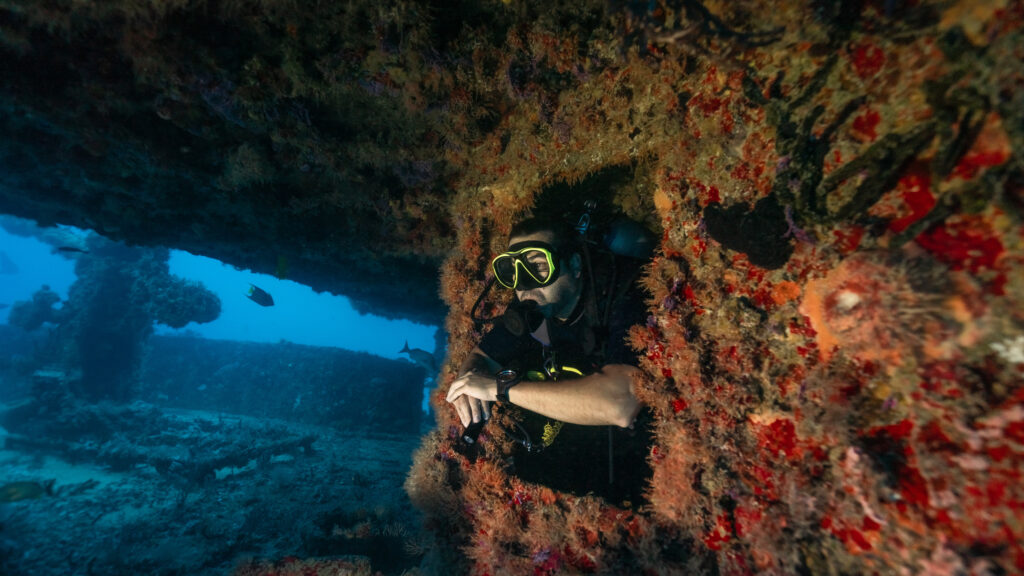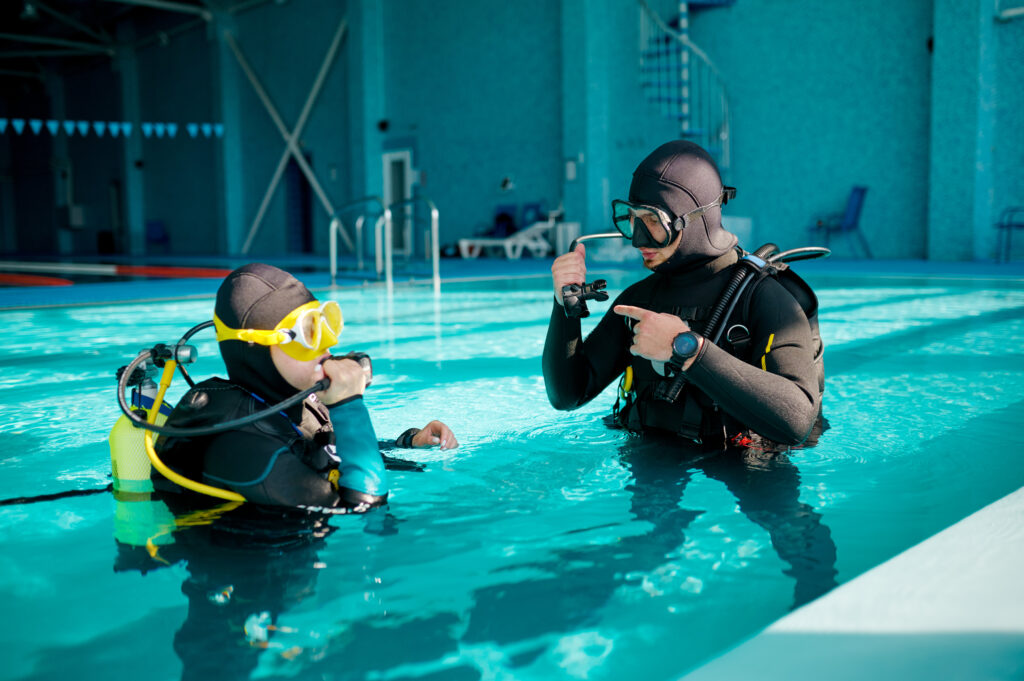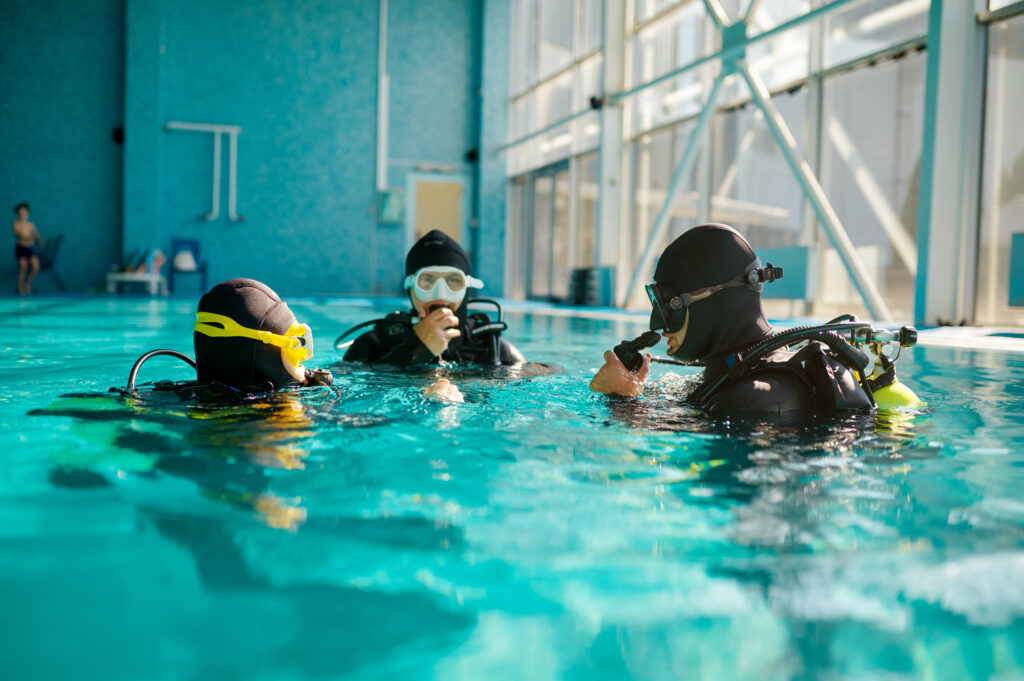What is Vasoconstriction?

Vasoconstriction is the process by which blood vessels narrow due to the contraction of muscular walls in the vessels, primarily small arteries and arterioles. This biological phenomenon is significant in regulating blood flow and blood pressure throughout the body. For scuba divers, understanding vasoconstriction is crucial because it directly impacts how their bodies react to the underwater environment, including the cold temperatures and increased pressure that are often encountered during a dive.
What is the Maximum Operating Depth?

Maximum Operating Depth (MOD) is a critical concept in the field of scuba diving. It refers to the deepest depth at which a particular gas mixture can be used safely without the diver experiencing oxygen toxicity. Understanding and adhering to the MOD is essential for ensuring diver safety and preventing potentially life-threatening conditions. MOD varies depending on the gas mixture being used and is influenced by the partial pressure of oxygen within the breathing gas. By comprehending the significance of MOD, divers can plan their underwater excursions more effectively and reduce the risks associated with diving to greater depths.
What is a Drop Weight?

A drop weight, a fundamental tool in scuba diving, plays a crucial role in managing a diver’s buoyancy. By adding or removing weight, divers can achieve neutral buoyancy, allowing them to maintain a stable position underwater without floating upwards or sinking uncontrollably. This balance is essential for conserving energy, enhancing underwater navigation, and ensuring safety during a dive. Drop weights can be attached to a diver’s belt, integrated into buoyancy control devices (BCDs), or even strapped to ankles, depending on individual preferences and specific diving conditions.
What is Mixed Gas?

Mixed gas, in the context of scuba diving, refers to breathing gases other than air, which are used to extend bottom time, reduce decompression obligations, and manage the risks associated with deep diving. These mixtures can include combinations of oxygen, nitrogen, helium, and other inert gases, tailored to specific diving conditions and depths. By using mixed gases, divers can safely reach greater depths and explore environments that would otherwise be inaccessible due to the limitations of breathing air alone.
What is Hyperventilation?

Hyperventilation refers to a state of rapid or deep breathing that exceeds the body’s need for oxygen. This condition leads to a significant decrease in carbon dioxide levels in the blood, causing various physiological effects. Understanding hyperventilation is crucial for scuba divers as it can profoundly impact their safety and overall experience underwater. Divers need to be aware of the causes, effects, and preventive measures related to hyperventilation to ensure safe and enjoyable diving experiences.
What is a Quad Cylinder System?

A quad cylinder system, commonly used in advanced scuba diving, refers to a configuration where four individual cylinders are used to supply breathing gas. This setup is particularly important for technical and deep-sea divers who require extended gas supplies and redundancy for safety. The evolution of scuba diving equipment has seen significant advancements, and the quad cylinder system represents a pinnacle of such technological progress. This article delves into the historical development, components, usage scenarios, safety considerations, and the advantages and limitations of quad cylinder systems, providing a comprehensive understanding of their significance in scuba diving.
What is a Gas Fraction?

In the context of scuba diving, a gas fraction refers to the proportion of each gas component within a breathing gas mixture. Understanding gas fractions is crucial for divers to ensure safe and efficient breathing under water. The significance of gas fractions cannot be overstated, as they directly influence dive planning, physiological effects on the body, and overall safety. By grasping the fundamentals of gas fractions, divers can make informed decisions that enhance their underwater experience while minimizing risks.
What is Ingassing?

Ingassing refers to the process by which gases dissolve into the body’s tissues and blood during scuba diving. This process is crucial to understand because it affects how divers must manage their time underwater and the ascent to the surface to avoid serious health risks. The term “ingassing” is often used in conjunction with its counterpart, “outgassing,” which describes the release of gases from the body. Both processes are central to diving physiology and safety, playing a vital role in dive planning and execution.
What is Narcosis?

Narcosis, often referred to as “the rapture of the deep,” is a condition that affects scuba divers when they descend to certain depths underwater. It is a state of altered consciousness caused by the pressure of breathing gases at depth. Understanding narcosis is crucial for divers to ensure their safety and well-being while underwater. This condition can impact a diver’s mental and physical capabilities, leading to potentially dangerous situations if not recognized and managed properly. As such, it is a topic of significant importance in the field of scuba diving, both for recreational and professional divers.
What is a Dive Table?

A dive table is a crucial tool in the practice of scuba diving, used to ensure divers can ascend safely without suffering from decompression sickness. These tables provide guidelines for how long a diver can stay underwater at various depths and the necessary surface intervals to avoid decompression sickness, also known as “the bends.” Dive tables are essential for maintaining diver safety, as they help manage the body’s intake and release of inert gases, such as nitrogen, which dissolve into the body tissues under pressure. By following dive table guidelines, divers can plan their dives to stay within safe limits, reducing the risk of injury from decompression.
